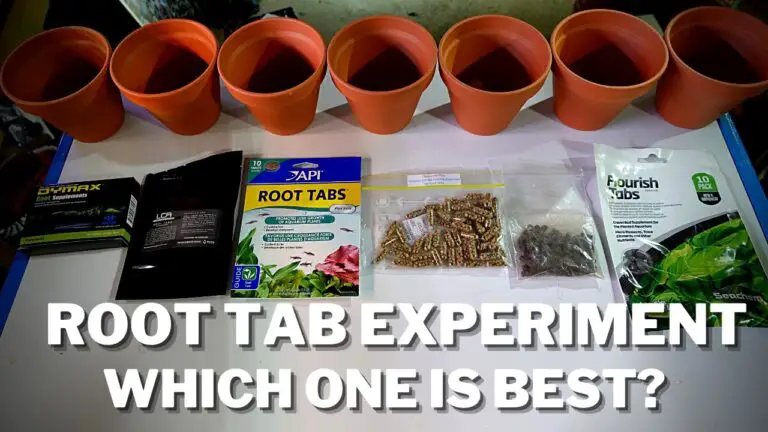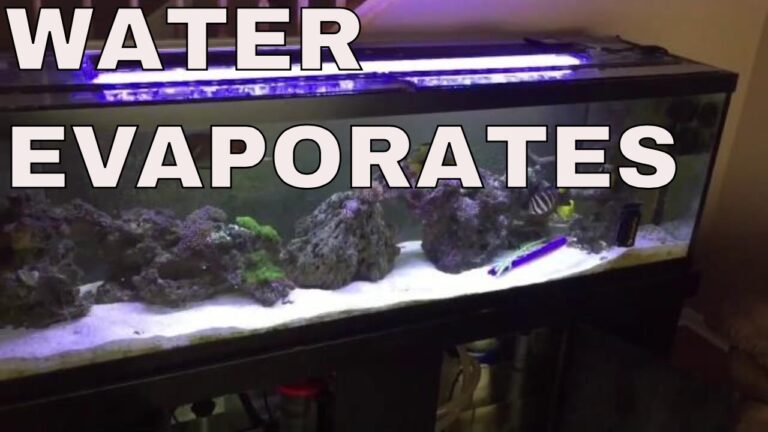How to Remove Ammonia from Water at Home?
Ammonia can be removed from water at home by aeration. Aeration involves exposing the water to air for a period of time, allowing the ammonia to evaporate and leave behind clean water. To do this, simply fill a bucket with your contaminated water and allow it to sit in an open area for several days or weeks until all of the ammonia has dissipated into the air.
Additionally, you can use activated carbon filters to filter out any remaining particles that may be present in your water. The activated carbon will absorb any residual ammonia and other contaminants, leaving you with clean drinking water free from harmful toxins like ammonia.
- Step 1: Pre-filtering the water – The first step in removing ammonia from water is to pre-filter it. This can be done with a simple carbon filter that you attach to your tap or shower head. Carbon filters are effective at trapping large particles and chemicals, including some forms of ammonia.
- Step 2: Reverse osmosis filtration system – A reverse osmosis filtration system is one of the most effective ways to remove ammonia from water. It uses a series of membranes and filters which trap small particles and molecules, like ammonia, as the water passes through them.
- Step 3: Ion exchange resin – An ion exchange resin is another way to remove ammonia from water at home. It works by trapping positively charged ions (like ammonium) while allowing negatively charged ions (such as calcium) to pass through untouched. Once all the ammonium has been trapped, it can then be flushed out with clean water.
- Step 4: Ultraviolet light treatment– Lastly, ultraviolet light treatment can also be used to effectively remove ammonia from water at home. This process involves passing contaminated water over UV lights which break down organic compounds found in the liquid such as nitrogen-containing molecules like ammonium into harmless products like nitrate, oxygen and nitrogen gas

Credit: home.howstuffworks.com
How Can You Remove Ammonia from Water?
Ammonia is a potentially dangerous contaminant that can be found in water. It has an unpleasant smell and taste, and it can also cause health problems when ingested. Fortunately, there are several methods for removing ammonia from water which include the use of activated carbon filters, reverse osmosis systems, distillation units or ion exchange resins.
Activated carbon filters are well suited to remove volatile organic compounds (VOCs) including ammonia as they contain tiny pores that capture contaminants on their surface area. Reverse osmosis systems work by forcing water through a semi-permeable membrane at high pressure, trapping particles such as bacteria and heavy metals along with other dissolved solids like nitrates and phosphates while letting pure water pass through. Distillation units boil the contaminated liquid before condensing the steam into clean drinking water; however this method requires energy consumption so may not be practical in some cases.
Finally Ion exchange resins act like magnets to replace ions in solution with hydrogen ions that bind tightly to ammonium molecules allowing them to be removed from the solution leaving safe drinkable water behind!
Do Water Filters Get Rid of Ammonia?
Water filters are an effective and cost-efficient way to remove unwanted pollutants from your drinking water. One of the most important things they can filter out is ammonia, a chemical compound that can make water taste unpleasant and cause health problems if ingested over long periods of time. Ammonia occurs naturally in both surface and ground water sources, but it can also be introduced into the environment through agricultural runoff or industrial waste.
Fortunately, most standard home water filtration systems will reduce levels of ammonia significantly when used properly. The type of filter you use will depend on where your source of water comes from: for example, activated carbon filters are best suited for removing contaminants from municipal tap water while reverse osmosis systems work best with well or spring waters that may have higher levels of contaminants like ammonia. Regardless, there are a variety of options available to help ensure that your family’s drinking water is safe and healthy by reducing concentrations of this potentially harmful chemical compound.
What Chemicals Remove Ammonia from Water?
Ammonia is a pollutant found in many water sources, and its presence can lead to health risks. Fortunately, there are several chemical agents that can be used to remove ammonia from water. The most common method uses an ion exchange process whereby the positively charged ammonium ions in the water are exchanged with hydrogen ions or sodium ions.
This process usually requires special resins which act as a medium for exchanging these ions. Other methods include oxidation using potassium permanganate or chlorine compounds such as calcium hypochlorite or sodium hypochlorite; this oxidizes the ammonium into nitrogen gas which then escapes out of solution and is not present in the final product. Lastly, biological filtration systems utilizing bacteria may also be employed to break down ammonia molecules into less harmful components such as nitrates and nitrites.
All of these methods are effective at removing ammonia from water but they all come with their own advantages and disadvantages depending on cost effectiveness, environmental impact, and other factors – so it’s best to consult an expert before making any decisions about what system will work best for your particular situation!
Is It Safe to Drink Tap Water With Ammonia in It?
The safety of drinking tap water that contains ammonia is a point of concern for many people. Ammonia, which can be found in both natural and man-made sources, has been linked to potential health risks when ingested. While ammonia levels in tap water are usually low enough to not pose an immediate danger, long-term exposure to higher concentrations of the chemical can lead to serious health complications such as liver damage and respiratory issues.
It is therefore important for individuals who drink tap water with elevated levels of ammonia to be aware of these risks and take steps to ensure their safety by either filtering out the contaminant or treating it with chlorine before consuming it. Additionally, regular testing should be done on local tap water supplies if concerns exist regarding its contamination level so that proper action can be taken if needed.
How To Remove Ammonia & Nitrate In Aquarium / Ammonia In Fish Tank & Nitrate in Fish Tank
How to Remove Ammonia from Water in Fish Tank
Ammonia is a toxic substance that can be found in fish tank water, and it needs to be removed in order for the fish to stay healthy. The best way to remove ammonia from your aquarium water is by using an activated carbon filter, which will absorb the toxins and help keep your tank clean. Additionally, you should perform regular partial water changes with fresh dechlorinated tap water to maintain adequate levels of oxygen as well as reduce any possible contaminants or pollutants that may have entered the tank.
Does Aeration Remove Ammonia
Yes, aeration can remove ammonia from a body of water. This is because the air bubbles created by aeration cause the ammonia to be released from the water and then dissipate into the atmosphere, where it becomes harmless. Aerating water also helps oxygenate it which improves fish health, as well as removing toxic gases such as methane and carbon dioxide.
How to Remove Ammonia in Wastewater
Removing ammonia from wastewater is a critical step in ensuring that water can be safely reused. Ammonia can interfere with the health of humans and aquatic life, making it essential to reduce ammonia levels before releasing wastewater into natural bodies of water or for other reuse purposes. The most common method for removing ammonia from wastewater is through chemical oxidation, which involves adding an oxidizing agent such as chlorine or ozone to the water to break down and convert the ammonium particles into nitrate ions.
This process must be monitored closely in order to ensure that no hazardous byproducts are formed during oxidation.
How to Remove Ammonia from Body
If you’re looking for a way to remove ammonia from your body, regular exercise and eating a balanced diet rich in fruits, vegetables and lean proteins can help. Exercise helps the body produce more enzymes that break down toxins like ammonia and other waste products. Eating foods that support healthy digestion also improves the breakdown of these molecules before they get absorbed into the bloodstream.
Additionally, drinking plenty of water helps flush out excess ammonia from the body while boosting overall health.
Ammonia Removal from Water by Air Stripping
Air stripping is an effective method for removing ammonia from water. This process involves passing air through a column of contaminated water, allowing the ammonia to evaporate and be carried away by the air stream. The stripped off ammonia can then be captured in filters or scrubbers before being discharged into the atmosphere.
Air stripping is often used when more traditional methods of removal such as activated carbon filtration are not practical due to high concentrations of contaminants, cost-effectiveness, or other considerations.
Ammonia Removal Technology
Ammonia removal technology is a vital tool for wastewater treatment and water reuse systems. It helps to reduce the amount of ammonia in wastewater, making it safer for use in irrigation or other applications. Ammonia removal can be achieved through different technological approaches such as chemical oxidation, membrane filtration, ion exchange and biological processes.
Each method has its own advantages and disadvantages depending on the requirements of the application at hand. Additionally, new advancements are being made every day to further improve this important technology’s effectiveness and efficiency.
Ammonia Removing Chemicals
Ammonia removing chemicals are used to reduce the presence of Ammonia in water. These substances work by binding the toxic ammonia molecules into a non-toxic form which can then be removed through filtration, or eliminated through chemical oxidation. This process helps to make water safe for both humans and aquatic life while also reducing unpleasant odors caused by high levels of Ammonia in the environment.
Ammonia in Water Treatment
Ammonia is an important component of water treatment for industrial and municipal applications. It helps to reduce the concentration of contaminants in water, making it safe for human consumption. Ammonia can also be used as a disinfectant to help prevent the spread of disease-causing organisms.
Additionally, ammonia can help to improve the aesthetic quality of drinking water by reducing odors and tastes associated with certain chemicals.
Conclusion
Removing ammonia from your water at home is not as difficult a task as it may seem. Using activated carbon filter systems, reverse osmosis systems, and simple chemical treatments are the three most effective ways to remove ammonia from drinking water. With all of these options available to you, you can easily make sure that your drinking water is safe and free of excess amounts of ammonia.





